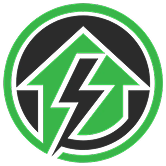
How to Choose the Right Generator Size for Your Home
Introduction
When the power goes out, the right-sized generator can make all the difference — keeping your lights on, heating running, and appliances working. But how do you know what size you actually need?
Choosing too small a generator means tripped breakers and limited power. Too large, and you’ll spend more than necessary. This guide will show you exactly how to choose the perfect generator size for your home.
👉 Explore our Generators Collection to get started.
Step 1: Identify Your Power Needs
Begin by listing the essential appliances and devices you want to run during an outage — then note their wattage.
| Appliance | Running Watts | Starting Watts (approx.) |
|---|---|---|
| Refrigerator | 600 | 2,200 |
| Sump Pump | 800 | 1,500 |
| Electric Heater | 1,500 | 1,500 |
| Lights (10 bulbs) | 600 | 600 |
| TV + Router | 200 | 200 |
| Laptop | 100 | 100 |
🧮 Example:
If your total running watts = 3,800W and your highest starting watts = 2,200W (for the fridge), you’ll need at least 6,000 watts (6kW) of generator power.
Step 2: Understand Generator Types
There are three main types of generators to consider:
🔹 Portable Generators
Perfect for occasional outages and smaller homes.
-
Output: 1kW–10kW
-
Fuel: Gas or dual-fuel
-
Best for: Fridges, lights, small heaters
👉 Browse Portable Generators.
🔹 Inverter Generators
Quiet, fuel-efficient, and produce clean power safe for sensitive electronics.
-
Output: 1kW–5kW
-
Fuel: Gasoline or propane
-
Best for: Electronics, RVs, camping
👉 Explore Inverter Models.
🔹 Home Standby Generators
Fully automated systems that kick in instantly during outages.
-
Output: 10kW–25kW+
-
Fuel: Natural gas or propane
-
Best for: Whole-house backup
👉 Check our Home Backup Generators.
Step 3: Calculate Running vs. Starting Watts
Every appliance has two wattage requirements:
-
Running watts: continuous power needed to operate.
-
Starting watts: extra surge required to start motors or compressors (like fridges or pumps).
💡 Tip: Always size your generator at least 20% above your total wattage for safety and performance.
Step 4: Consider Future Expansion
If you plan to add more appliances or upgrade to solar later, choose a slightly larger generator now to future-proof your investment.
👉 See high-capacity options in our Generators Collection.
Step 5: Factor in Fuel Type
-
Gasoline: Widely available, great for portability.
-
Propane: Cleaner burning, ideal for long storage.
-
Dual-Fuel: Combines both for flexibility.
👉 Explore Dual-Fuel Generators for the best of both worlds.
Recommended Sizes
| Home Size | Recommended Generator Capacity |
|---|---|
| Apartment / Small Home | 3–5 kW |
| Medium Home | 6–10 kW |
| Large Home | 10–20 kW |
| Off-Grid / Full Backup | 20 kW+ |
Conclusion & Call to Action
Choosing the right generator isn’t about guessing — it’s about planning your energy needs. Whether you need a portable unit for emergencies or a full home backup solution, Build The Power has you covered.
👉 Explore now: Shop Generators at Build The Power

